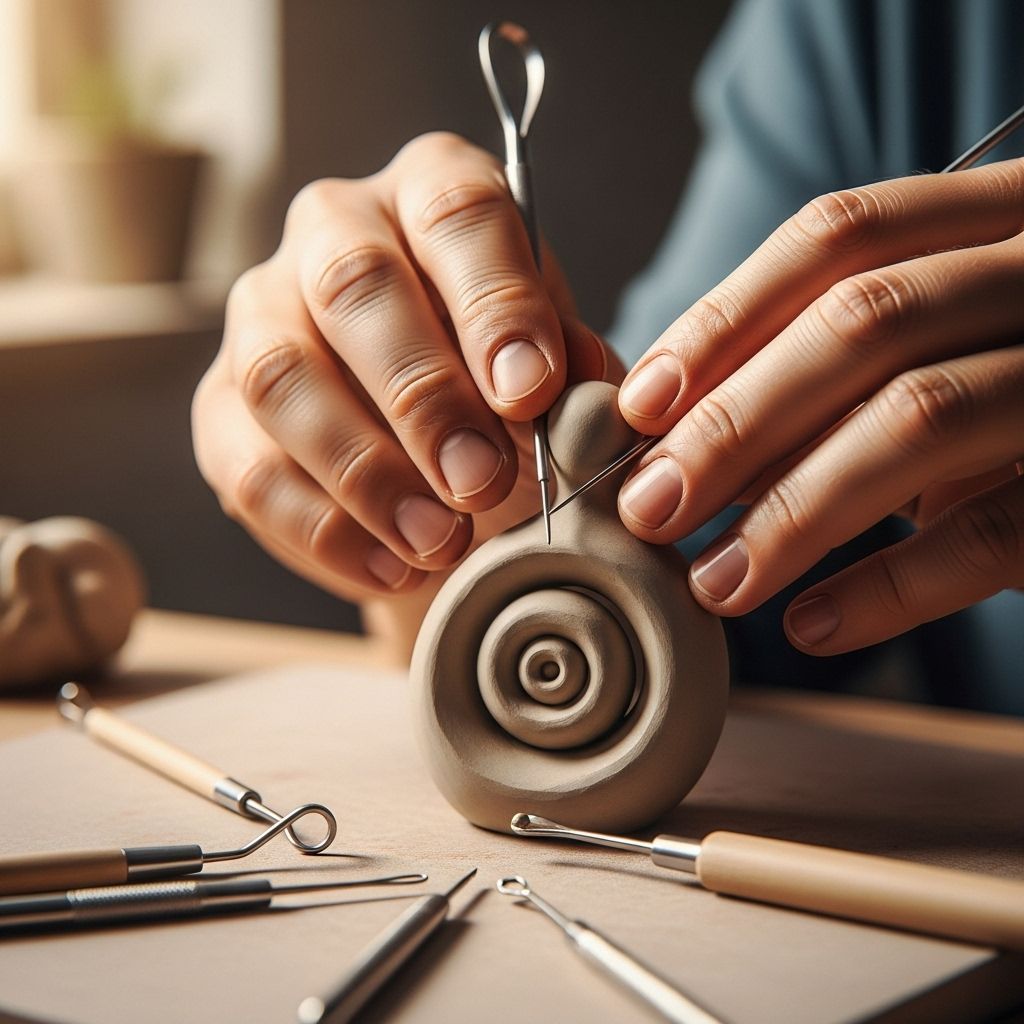Mindful Sculpting for Emotional Grounding
Tactile art practice provides a stable anchor to navigate life’s inner turbulence.

Introduction to Mindful Sculpting for Emotional Grounding
Mindful sculpting is a unique practice that combines the therapeutic benefits of mindfulness with the creative expression of sculpting. This approach helps individuals cultivate emotional grounding, which is essential for maintaining inner balance and navigating life’s challenges effectively. Emotional grounding techniques are designed to keep us present in the moment, allowing us to manage overwhelming emotions and make rational decisions even in stressful situations.
Understanding Emotional Grounding
Emotional grounding is about being connected to the present moment and finding inner stability amidst external chaos. It involves acknowledging and managing emotions effectively, which is crucial for maintaining healthy relationships, making rational decisions, and achieving overall well-being. By practicing emotional grounding, individuals can prevent being swept away by intense feelings and maintain a sense of calm and stability.
Benefits of Mindfulness in Sculpting
Mindfulness brings a deeper level of awareness and engagement to the sculpting process. When sculpting mindfully, you focus on the sensations in your hands, the texture of the material, and the physical act of shaping. This focus helps anchor you in the present moment, providing a sense of calm and clarity that can be therapeutic and meditative.
How Mindful Sculpting Enhances Emotional Grounding
Mindful sculpting serves as a powerful tool for emotional grounding by providing a tangible means of expression and a focus for the mind. The act of creating allows individuals to channel their emotions into something concrete, which can be both cathartic and grounding. By concentrating on the sculpting process, one can detach from overwhelming emotions and find stability in the present moment.
Practical Techniques for Mindful Sculpting
The practice of mindful sculpting involves several key techniques that enhance emotional grounding:
- Present-Moment Awareness: Focus on the sensations and textures as you work on your sculpture. Feel the weight of the tools, the coolness or warmth of the material, and the subtle changes in texture as you shape it.
- Emotional Expression: Allow your emotions to guide your creative process. Express your feelings through the shapes, forms, and textures of your sculpture.
- Breathing Exercises: Integrate mindful breathing into your sculpting practice. Take deep breaths as you work, focusing on the sensation of the breath moving in and out of your body.
- Patience and Non-Judgment: Cultivate patience with your creative process. Avoid judging your work; instead, focus on the journey and the experience of creating.
Exercises for Mindful Sculpting
Here are some exercises to help you incorporate mindfulness into your sculpting practice:
- Texture Exploration: Start by exploring different materials and textures. Use clay, wood, stone, or any other medium that feels interesting to you. Spend time touching, feeling, and manipulating the material before you begin sculpting.
- Blind Contour Drawing: Before you start sculpting, practice blind contour drawing. This involves drawing the outline of an object without looking at the paper. This exercise helps develop your observational skills and can translate well to sculpting.
- Sensory Focus: During the sculpting process, focus on one sense at a time. For example, start with the sense of touch, noticing how the material feels under your hands. Then, shift your focus to the sound of the tools on the material, or the smell of the clay.
Integrating Emotional Grounding Techniques
Emotional grounding techniques are essential for managing overwhelming emotions and maintaining inner stability. Here are some methods to integrate into your mindful sculpting practice:
- 5-4-3-2-1 Exercise: Take a break during sculpting to notice five things you can see, four things you can touch, three things you can hear, two things you can smell, and one thing you can taste. This exercise helps ground you in the present moment.
- Body Scan: As you work, periodically do a quick body scan. Notice the sensations in your body, from your toes to the top of your head. This helps you stay connected to your physical self and manage any tension.
Conclusion
Mindful sculpting offers a unique blend of creative expression and mindfulness techniques that can enhance emotional grounding. By focusing on the present moment and using sculpture as a means of emotional expression, individuals can cultivate a deeper sense of stability and inner peace. Whether you are an artist or simply looking for a new way to manage stress and emotions, mindful sculpting can be a powerful tool for personal growth and well-being.
Frequently Asked Questions (FAQs)
Q: What is emotional grounding?
A: Emotional grounding is a practice that helps individuals stay present and manage overwhelming emotions by reconnecting with their physical and mental state.
Q: How does mindful sculpting help with emotional grounding?
A: Mindful sculpting provides a tangible outlet for emotions and helps individuals focus on the present moment, which can be calming and grounding.
Q: Do I need to be an artist to practice mindful sculpting?
A: No, you don’t need to be an artist to practice mindful sculpting. It’s about using the creative process as a means for personal growth and emotional balance.
References
- https://daniellesethi.com/emotional-grounding/
- https://ezracounseling.com/grounded-meaning-strategies-for-emotional-stability/
- https://www.synergypsychotherapy.com/thegobl/2021/4/4/emotional-grounding-13
- https://www.resiliencelab.us/thought-lab/grounding-techniques
- https://www.healthline.com/health/grounding-techniques
- https://positivepsychology.com/grounding-techniques/
- https://www.youtube.com/watch?v=hcHp4QCjSHY
- https://www.carolynspring.com/blog/what-grounding-is-and-isnt/
- https://oklahomatfcbt.org/wp-content/uploads/2018/08/Grounding-Worksheet.pdf
Read full bio of medha deb












